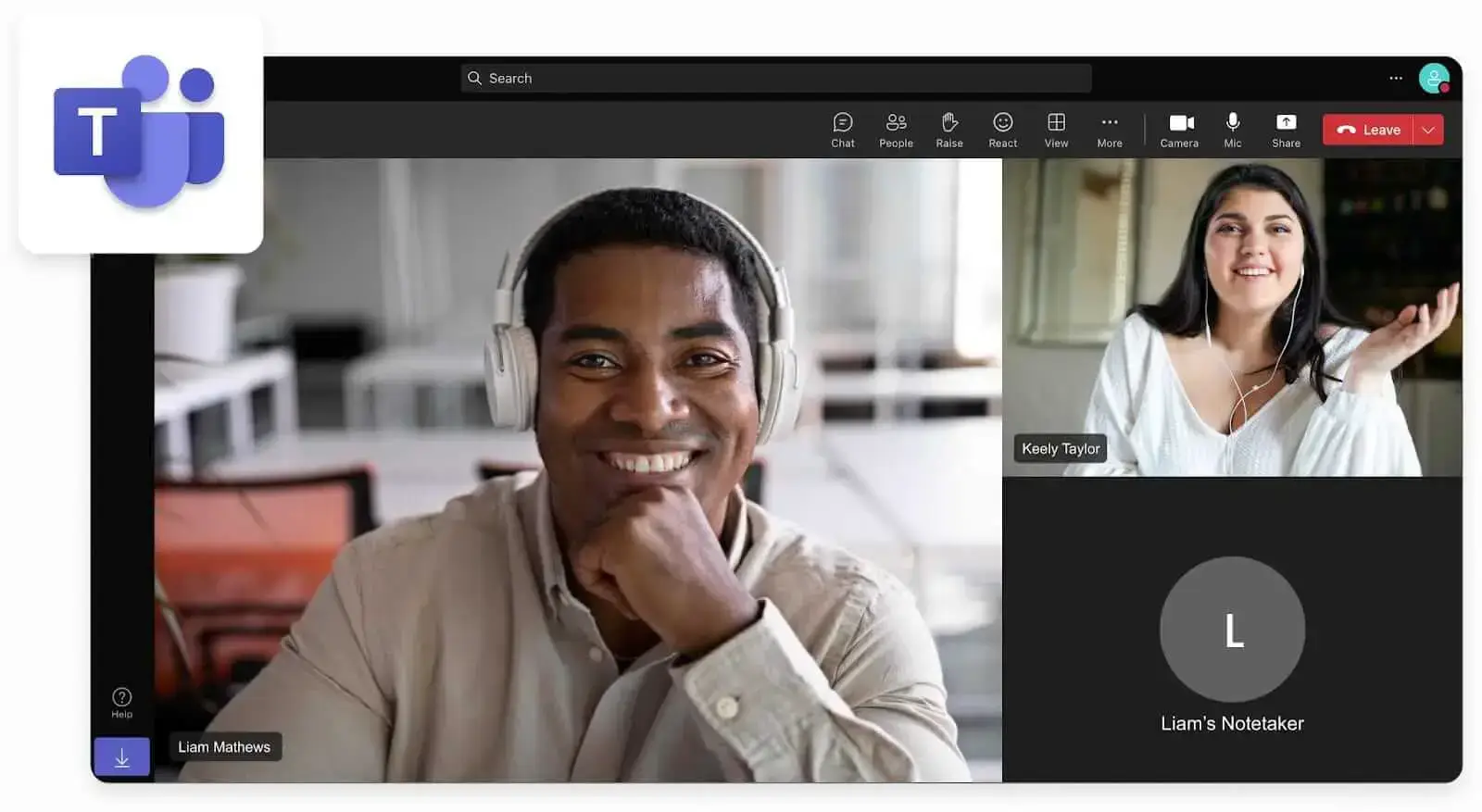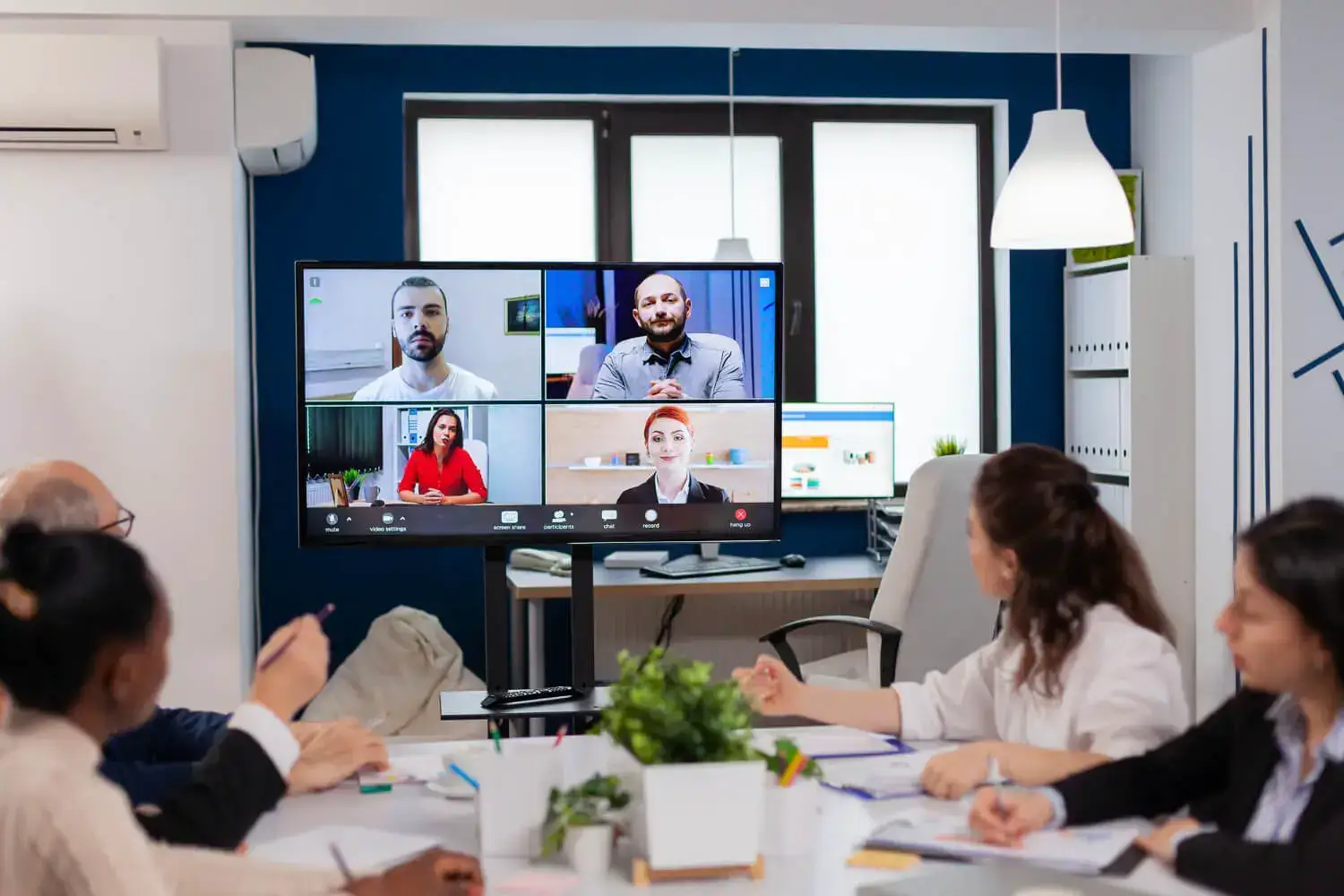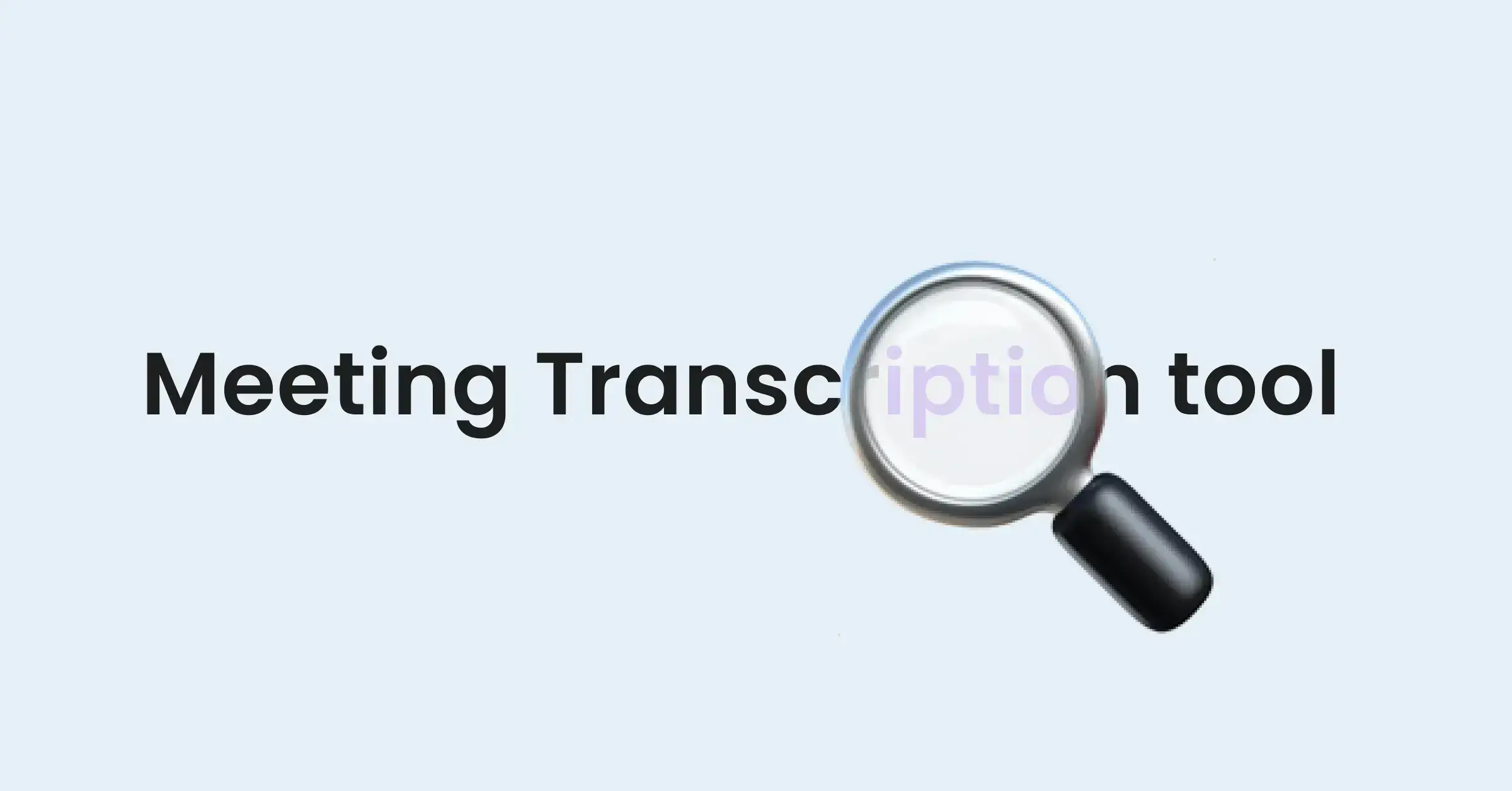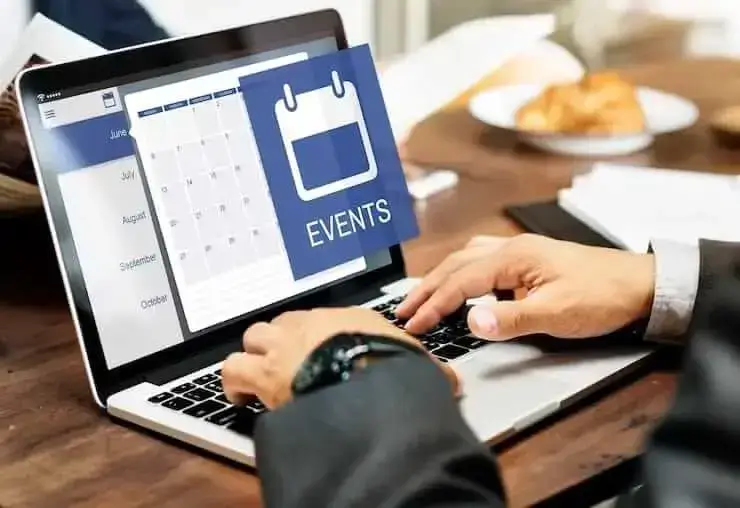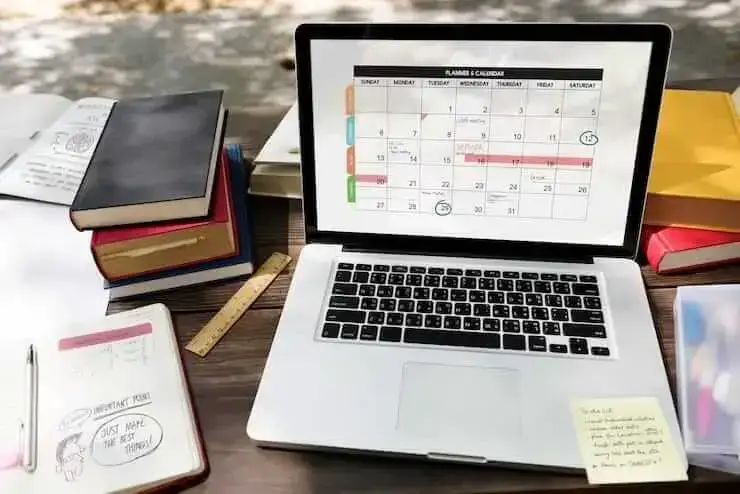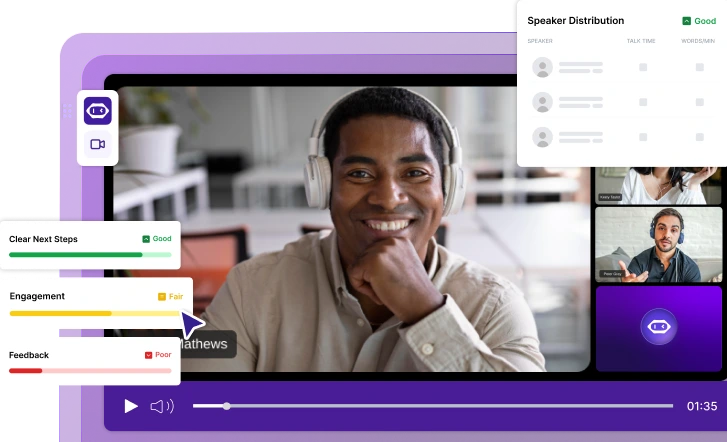15 Types Of Meetings: What Makes Them Different & Tips
Are you a manager who wants to master the art of hosting meetings? Learn how to approach these 15 types of meetings effectively with our exclusive tips!

✅ Free meeting recording & transcription
💬 Automated sharing of insights to other tools.

Image Source: rawpixel.com on freepik.com
Have you ever wondered why some meetings are engaging and productive, while others feel like a waste of time? The secret lies in understanding the different types of meetings and their unique purposes.
Whether you're leading a brainstorming session, conducting a status update, or hosting a team-building event, knowing what to expect and how to prepare can make all the difference.
In this article, we’ll explore 15 distinct types of meetings, breaking down what sets each one apart and sharing expert tips to help you get the most out of every gathering. Let’s dive in and transform your approach to meetings!
What to Consider Before All Types of Meetings
Not too long ago, face-to-face meetings were the norm, while remote and hybrid meetings were much less common. These were typically used for exchanging information with teams or clients from remote offices or external contractors.
Today, virtual meetings are an integral part of daily life. Even companies that have returned to the office regularly hold hybrid meetings, where some participants join from their home offices.
In fact, relying solely on face-to-face meetings is now seen as highly unproductive. As your staff engages in more diverse types of meetings than ever, it's crucial to maximize the relevance and productivity of each one.
If not, you risk falling into an endless cycle of unproductive meetings.
Types of Team Meetings Everyone Needs
These are the types of team meetings you need:
- Meetings to check in on the progress of a project and ensure that it is on track to meet its goals
- Meetings for discussing changes in the company's overall strategy and how they will impact individual projects
- Meetings to begin planning and organizing a new project, or making a project estimation
- Meetings to give and receive feedback on a project or individual's work
- Meetings for addressing and resolving conflicts that have arisen within a team or project
- Meetings to quickly address and resolve urgent issues that require immediate attention
Types of Team Meetings You Don’t Need
These are the types of team meetings you don’t need:
- Meetings without a clear goal are often unproductive
- Recurring meetings without a specific agenda or goal can become a waste of time
- Meetings without an agenda can quickly become derailed and lead to no concrete results
- If meeting attendees don't have access to the necessary materials ahead of time, the meeting most likely should be rescheduled
- A meeting with an undefined list of participants can lead to confusion and a lack of productivity
- If the information can be communicated effectively through email or Slack message, do that instead of scheduling the meeting
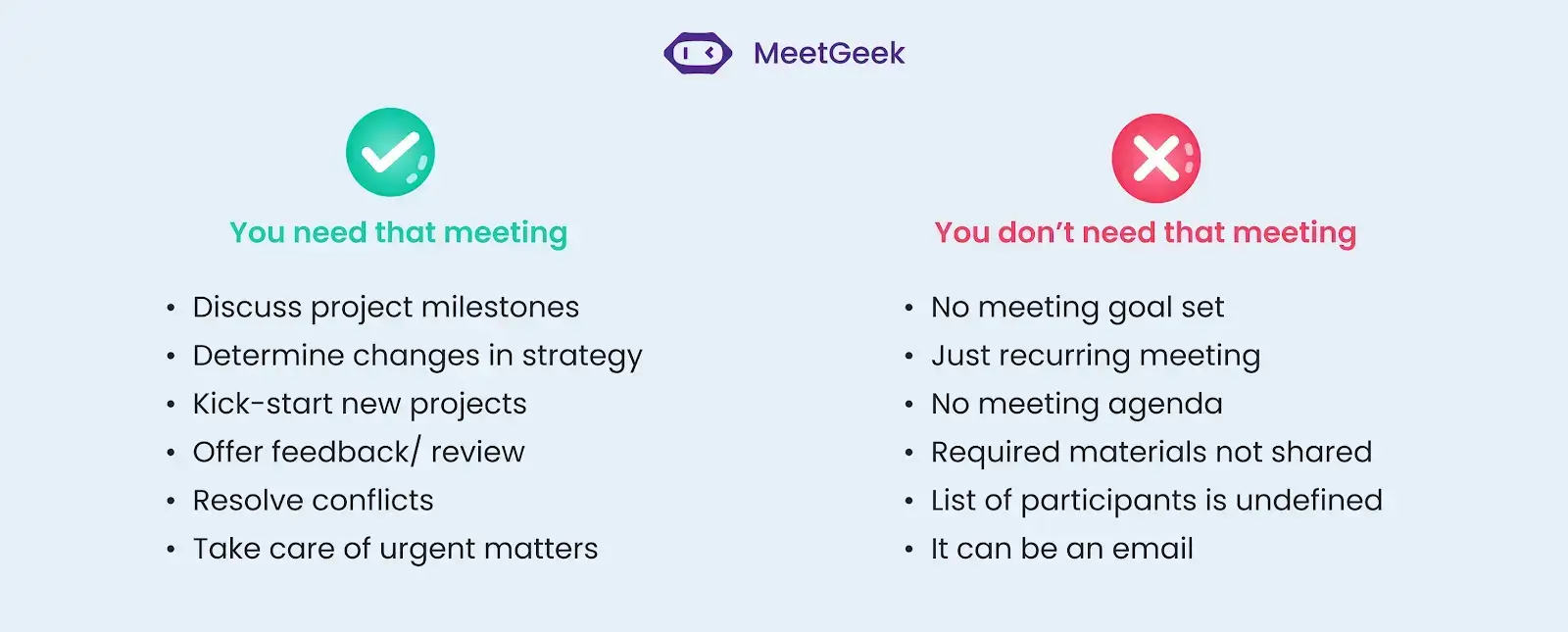
Here are three tips to help you prepare for productive meetings:
- Have a meeting agenda
- Start on time & keep it simple
- Have the right people at the table
1. Have a Meeting Agenda
Agendas are more than just an outline for discussion. They can make all the difference between pointless meetings and the ones that are truly engaging and productive.
A good agenda helps your team stay on top of your meeting goals and get results faster than ever. Collaboration and productivity can be increased on a larger scale by implementing different types of meeting agendas that establish guidelines for the conversation based on the goals, list of participants, and format of the meeting.
2. Start on Time & Keep It Short
Meetings will be more productive if you give everyone a set timeline to work with and follow an optimal meeting cadence. As a leader, punctuality is a must if you want to inspire others to be mindful of everyone's time.
On that note, the shorter your meetings, the more likely it is that people will show up and pay attention. Long meetings can overwhelm your team, particularly when they are frequent. It may make meeting participants become exhausted and lose interest while critical information is being discussed.
Set aside 40 minutes for weekly & monthly meetings and 60 minutes for biweekly & quarterly meetings. For an annual general meeting, you may want to set aside 2–4 hours, depending on the size of your organization.
3. Have the Right People at the Table
To avoid overcrowding the meeting, establish which staff members must attend. A decision-making meeting, for example, should only include key stakeholders. An innovation meeting, on the other hand, may require subject-matter experts, decision-makers, and technical support staff to be present. A committee meeting, requires the attendees to be selected by the managementor the board.

Image Source: freepik.com
This ensures that those who attend can meaningfully contribute and have their voices heard. The easiest way to do this is to list all the questions you need answers to during your meeting. Whoever can provide them requires a seat at the table.
How to Make Every Meeting Type Effective with MeetGeek
Have you ever thought of how you can make every type of meeting more effective, ensuring that discussions are productive, decisions are well-documented, and follow-up actions are clearly defined?
The answer is simple: MeetGeek. This AI meeting automation platform is designed to enhance various meeting types' effectiveness by providing robust features that streamline planning, execution, and follow-up.
Whether you are conducting daily standups, weekly reviews, or strategic management meetings, MeetGeek can help ensure that each session is productive and valuable.
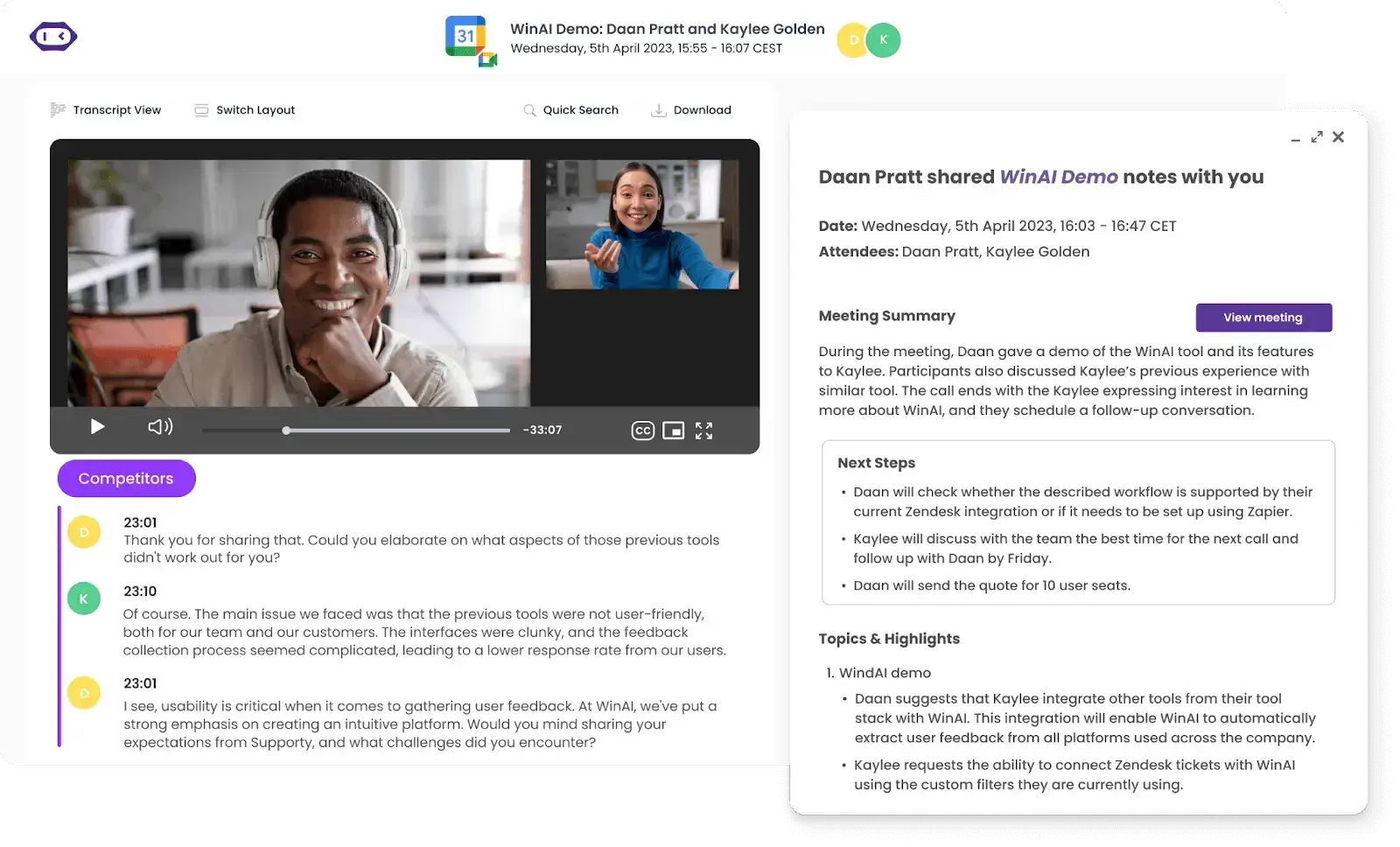
Here are the features MeetGeek offers for any meeting type:
- Meeting recording and transcription: With MeetGeek, every meeting is automatically recorded and transcribed, allowing team members to review discussions at their convenience and stay aligned with team objectives.
- Key point and action item detection: MeetGeek uses advanced AI to identify and highlight key points and action items during meetings, helping teams focus on what matters most without sifting through lengthy recordings.
- Shareable meeting summaries: After each meeting, MeetGeek generates concise, shareable summaries that can be easily distributed among team members from distributed or remote teams to keep everyone on the same page.
- Integrations with CRM and collaboration tools: MeetGeek seamlessly integrates with a variety of CRM and collaboration tools, ensuring that insights from your meetings are quickly incorporated into your workflow.
- Searchable transcripts: Save time and enhance productivity with searchable transcripts to save time and energy that could be allocated elsewhere.
- Time-stamped notes and comments: MeetGeek’s time-stamped notes and comments allow team members to engage in asynchronous discussions and provide feedback on specific meeting parts.
- Efficient follow-ups: Set up workflows that email participants AI-generated summaries, complete with action items and key takeaways, within minutes after the conversation ends, to keep the momentum going.
What about in-person meetings, then? MeetGeek’s mobile app captures your live interactions, providing accurate meeting recordings and transcriptions directly to your account within minutes.

This ensures that, regardless of meeting formats, types, and contents, you and your team never miss out on essential information.
CTA
15 Types Of Meetings: What Makes Them Different & Tips
When meeting formats are not used wisely, they can become time-wasting activities on an already busy schedule. For effective and efficient meetings, you’ll need a structured approach.
Here are 15 types of meetings and what makes them different:
- Daily meetings
- Weekly meetings
- Project kickoff meetings
- Planning meetings
- One-on-one meetings
- Information-sharing meetings
- Problem-solving meetings
- Decision-making meetings
- Status update meetings
- Retrospective meetings
- Board meetings
- Client meetings
- Team building meetings
- Management meetings
- Onboarding meetings
1. Daily Meetings
Daily meetings are usually short discussions between essential members of a project at the beginning of the workday.
Daily check-in meetings are usually short and to the point, also known as “daily standups” in teams that follow the Agile methodology — which focuses on the people doing the work and how they work together.
Here, attendees can discuss the previous day, any issues they might have encountered, and the tasks due for the current day. Particularly in fully remote teams, this type of meeting is used to touch base in the morning and set the tone for a workday.
Here are some best practices for daily standup meetings:
- Organize your daily standups at the same time during the day (and in the same place, for in-person meetings).
- Keep your standups brief.
- Be clear on what the standup meeting is for.
- Switch up the standup meeting facilitator with every meeting to encourage active participation.
2. Weekly Meetings
Unlike daily meetings, which are brief and focused, weekly team meetings provide a broader perspective on the project's trajectory and allow for more in-depth discussions. In teams that adhere to Agile practices, these meetings often take the form of “weekly retrospectives” or “weekly reviews.”
Here, team members reflect on the week's accomplishments, identify any challenges, and collaboratively plan for the week ahead. This meeting type is crucial for maintaining momentum, aligning team efforts, and ensuring everyone is on the same page.
Here are some best practices for weekly meetings:
- Schedule every weekly meeting at a consistent time and day.
- Encourage open communication and ensure all team members have the opportunity to speak.
- Review the past week’s achievements and challenges, and set clear goals for the coming week.
- Keep the meeting to a reasonable length to maintain engagement and avoid fatigue.
3. Project Kick-Off Meetings
A successful project kickoff meeting is crucial at the start of any collaboration. This meeting type is useful for ensuring group cohesion and ensuring that everyone involved has a general overview of the project.
People involved should be aware of each other’s roles and responsibilities, as well as the project plan, goals, and procedures before they start their work.
Here’s what you need to do during project kick-off meetings:
- Prepare some icebreakers before the kick-off meeting. This allows participants to get to know each other before working together.
- Allow people to ask questions and express concerns about the project.
- Hold your kick-off meetings before any work begins. That way, everyone knows exactly what they need to do next and how to properly synchronize with the others.
4. Planning Meetings
A project planning meeting is usually hosted by a team leader or a manager, and it focuses on presenting the plan for the entire project to team members, other managers, or clients.
The information discussed frequently includes the schedule of the entire project, detailed with tasks, milestones, costs, and other resources.
While it’s typically structured as a presentation, in planning meetings participants can also help the project manager make adjustments when needed, based on their expertise.
Here are some tips for planning meetings:
- Verify that everyone is aware of their responsibilities.
- Harness the diverse perspectives of the attendees by retaining the most creative ideas brought to the table.
- Go the extra mile to prepare a meeting agenda with specific topics & courses of action ahead of time.
5. One-on-One Meetings
One-on-one meetings are personalized sessions between a manager and an individual team member, designed to foster communication, provide feedback, and support professional development.
Unlike group meetings, one-on-one meetings offer a private setting where employees can speak candidly about their experiences, challenges, and career aspirations. Managers can use this time to give personalized feedback, discuss performance, and set individual goals.

In remote or hybrid teams, one-on-one meetings are even more crucial, as they help bridge the gap created by physical distance and ensure continuous, open communication.
Here are some best practices for one-on-one meetings:
- Prepare an agenda template, but remain flexible to address the employee’s immediate concerns.
- Listen actively and empathetically, allowing the employee to speak freely.
- Provide constructive feedback and recognize achievements.
- Set clear, achievable goals and follow up on previous discussions to track progress.
6. Information-Sharing Meeting
These meetings are designed for deep diving into certain topics such as any updates, innovative proposals, procedures, technical details, approaches, etc.
Since the purpose of the meeting is to share knowledge, the host usually shares their screen and goes step by step through the materials.
Here are some tips for productive information-sharing meetings:
- Before addressing any concerns, wait until all the information has been presented.
- Use visual aids, such as slides or charts, to enhance understanding and retention.
- Allow time for questions and clarifications to ensure everyone has a clear understanding.
- Summarize the key takeaways at the end of the meeting and provide follow-up materials if necessary.
7. Brainstorming / Problem-Solving Meetings
Brainstorming is defined as a group problem-solving technique. For any team, holding brainstorming meetings is an important part of the collaborative process.
Through proper ideation, teams can find creative solutions to various problems they encounter in their daily activity, as well as innovative proposals for future development.

No matter the meeting format, you can still get creative. Whiteboard apps, editable documents, slides, design tools, sticky notes, and other similar software can make for a truly effective problem-solving meeting.
Here are a few tips for brainstorming meetings:
- Eliminate ideas that are unrealistic from the brainstorming session.
- Ensure that every team member knows what needs to be done. Tell them how many options they should try before addressing the next concern.
- Set a deadline for reaching a resolution and follow a brainstorming meeting template. This will motivate your colleagues to concentrate on producing outcomes.
8. Decision-Making Meetings
As we have all experienced at least a few times in our careers, planning is not an exact science. Even the most straightforward solutions can be altered by blockers, unexpected situations, and new information coming to light.
In these situations, decisions need to be made, more often than not, under time constraints. Decision-making meetings are focused on defining tasks and leaving with clear actions. By the end of the meeting, each participant should understand the next practical steps.
Here’s what to consider before decision-making meetings:
- Choose wisely the person in charge of the decision-making meeting. Make sure they’re open to all types of feedback.
- Keep in mind that there is a chance that not everyone will agree to the decisions made.
- Allot time to discuss how team members will be putting the decisions into action.
- Make sure to thoroughly document all relevant aspects of the decision-making process for future reference.
PRO TIP: Since we know it’s not always easy to take notes during your meetings, MeetGeek is coming to your rescue. Our tool was specifically designed to allow you to fully engage in your meetings while taking care of the daunting note-taking process.
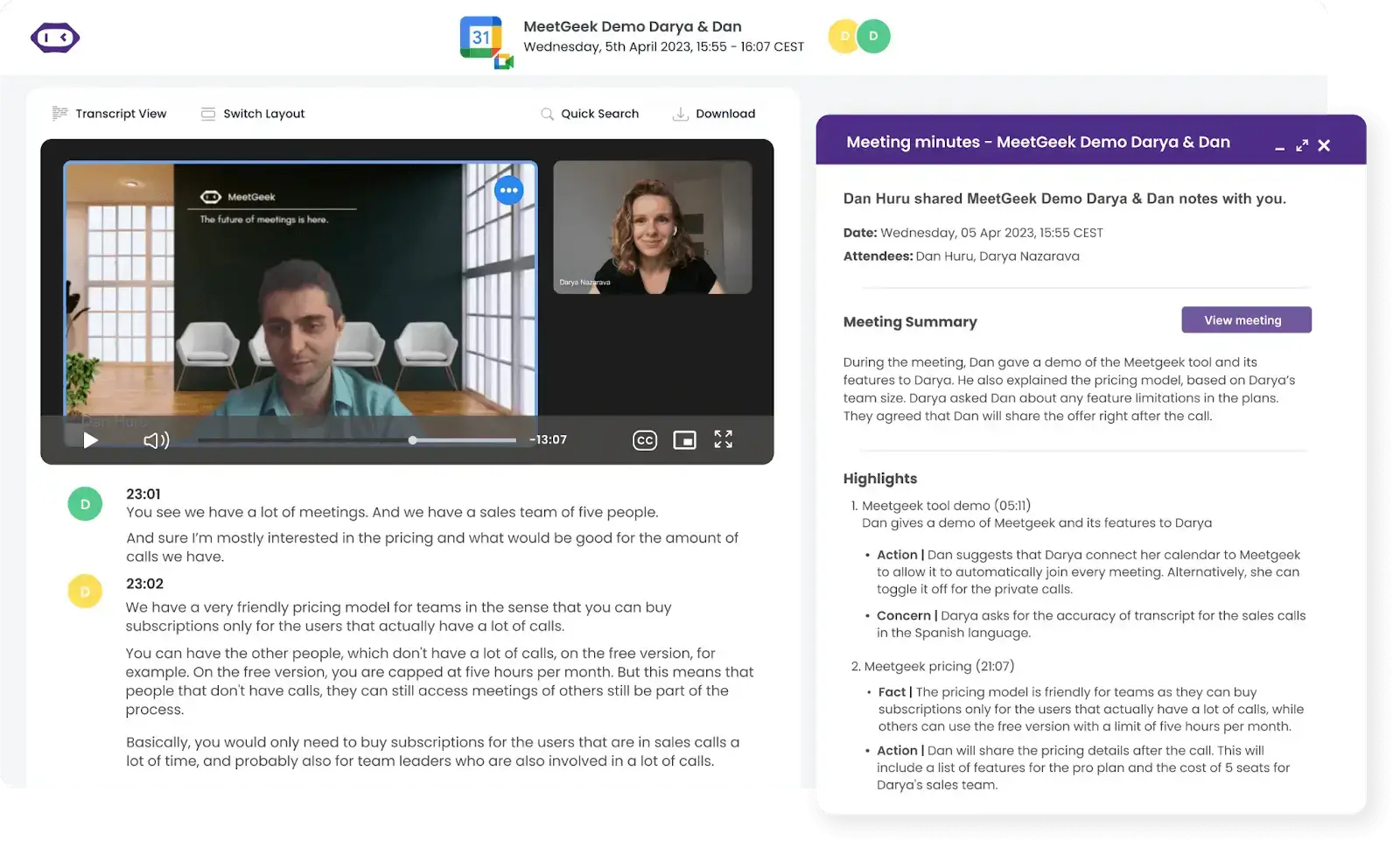
9. Status Update Meetings
Status update meetings are periodical checks on the status of a project. Since they are a common type of meeting, status updates are usually hosted by the project manager.
The discussions are meant to touch base on project progress, fix issues, adapt plans when necessary, and discuss the next steps to follow. Unlike daily meetings, status updates cover longer periods, so they are more complex and require more preparation.
Here are some tips for status update meetings:
- Allow a couple of the top performers to share their impressions of what’s been working for the project.
- Make sure to reiterate what the common goal is and set aside time for questions.
- Encourage team members to provide brief updates on their work, highlighting any issues they are facing.
- Use a collaborative tool or dashboard to visually track progress and facilitate discussion.
10. Retrospective Meetings
These are held at the end of a project. The goal of a retrospective meeting is to provide opinions on the overall experience, exchange newly learned information, and offer feedback.
When working from the home office or as a part of a hybrid team, there is less transparency and awareness of other people’s activities.
In retrospective meetings, attendees can share what they have learned from the past weeks or months on the job. This helps to avoid past mistakes and acknowledge potential solutions for future needs, as well as focus on reflection and growth.
For Agile teams, retrospectives are a core practice, often held at the end of each sprint, to ensure that the team continually evolves and improves.
Here are some tips for better retrospective meetings:
- Schedule your retrospective meetings at the end of each project cycle or sprint.
- Create a safe and open environment where team members feel comfortable sharing honest feedback.
- Use structured formats, such as “Start, Stop, Continue” or “What Went Well, What Didn’t,” to guide the discussion.
- Document key takeaways and action items, and ensure they are followed up on in subsequent cycles.
11. Board Meetings
This type of formal meeting gathers an organization’s board of directors. They are usually held at regular intervals or as needed to discuss major issues, review performance, and conduct the board's legal business.
Unlike informal meetings, the quorum, procedures, and roles for a board of directors meeting are spelled out in the organization's operating agreements. An organization chairperson typically presides over these meetings.
Here is how to have an effective board meeting experience:
- Focus on the meeting’s structure. A board meeting is an important part of any company's business structure, but it does not have to be a waste of time.
- Facilitate clear decision-making by summarizing points and asking for motions when necessary.
- Keep discussions between board members focused on strategic issues rather than operational details.
- Find an experienced minute taker or get a tool like MeetGeek to help you collect all the necessary data, including meeting KPIs.
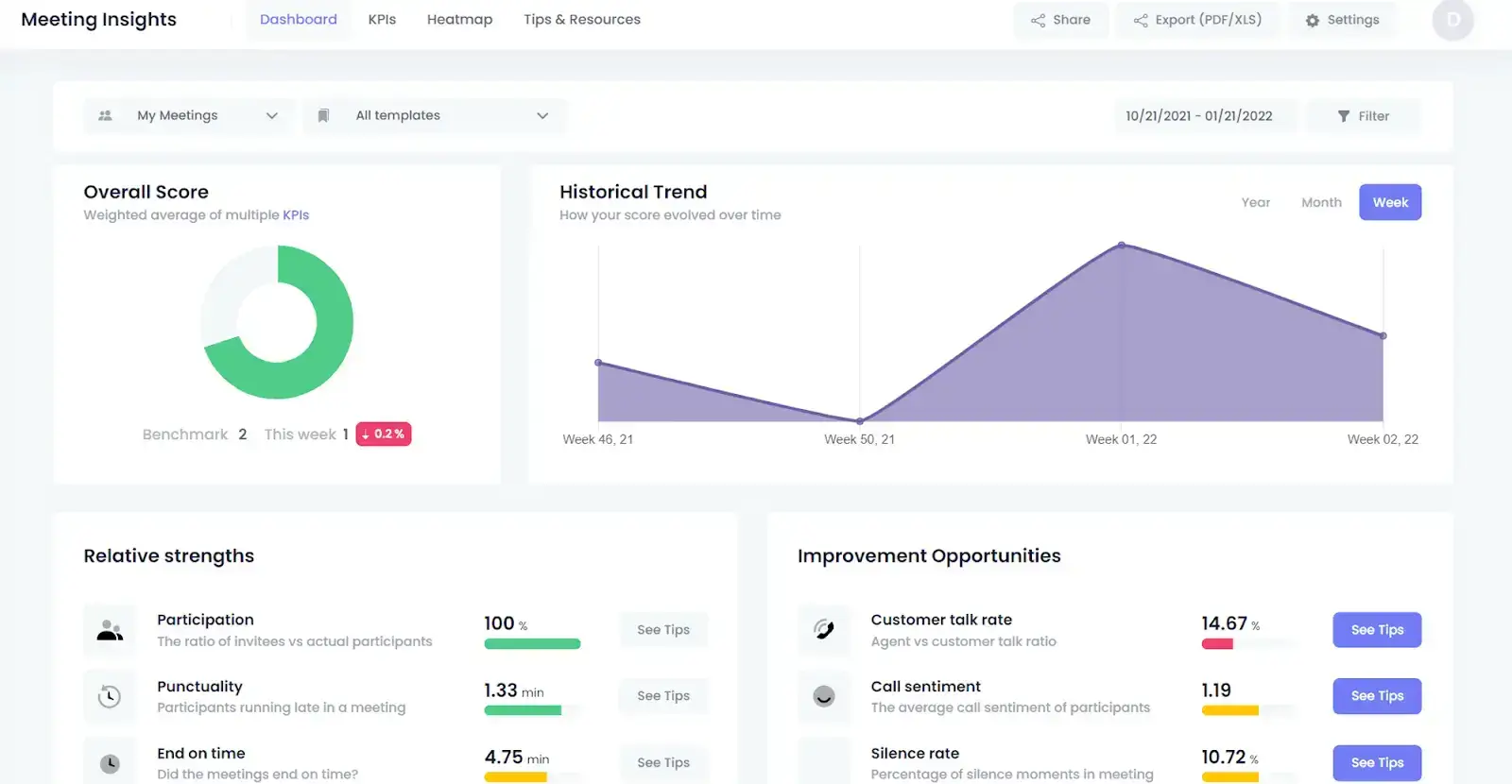
12. Client Meetings
Whether you work under a B2C or a B2B model, conversations with clients and stakeholders are useful for almost all departments of a company.
Hosting client meetings and interviews can help us better understand the needs of the client so we can be better equipped to handle all connected matters. Business meetings with clients are not as frequent as other discussions, but they are just as relevant.

Depending on the team’s activity, you might host such a meeting to ask for feedback, get approval, present plans, or make proposals.
For a productive client meeting, make sure to:
- Research all participants before the meeting to find common ground with them and avoid major surprises.
- Understand the client’s goals and challenges to provide relevant solutions and insights.
- Prepare and send any necessary documents, reports, or presentations beforehand.
- To relieve their concerns and make sure you and your client are on the same page, follow up with them after the meeting and throughout the entire project.
- Try to create the best environment possible to ensure a productive meeting.
13. Team Building Meetings
Unlike status update or retrospective meetings, team-building meetings focus on activities and discussions that promote interpersonal connections rather than project-specific outcomes.
They often include engaging exercises that encourage the entire team to work together in new and enjoyable ways. If your team operates remotely or in hybrid mode, this meeting format can promote a sense of connection and ensure that all team members feel included and valued. Whether team building takes place on-site or at an off-site location, partnering with a travel booking site will simplify your team's travel logistics.
Here are some best practices for your next team-building meeting:
- Plan a variety of activities that appeal to different interests and strengths within the team.
- Encourage participation and ensure that activities are inclusive and accessible to all team members.
- Focus on building trust, communication, and collaboration through interactive exercises.
- Follow up with a brief discussion to reflect on the activities and gather feedback for future team-building sessions.
- Include team building activities into your regular meetings.
14. Management Meetings
Management meetings are a great instrument for leadership on strategic goals, discussing high-level issues, and making critical decisions that impact teams.
For managers, these typesa of formal meetings are platforms they can use to share updates, discuss challenges, and coordinate efforts across different departments.
Here are some tips for an effective management meeting:
- Encourage open and honest communication among all participants.
- Allocate time for each manager to provide updates on their department or projects.
- Focus on strategic issues and decisions that require actual input from the entire management team, rather than common daily occurrences.
- Document key decisions and action items, and ensure follow-up on agreed actions.
15. Onboarding Meetings
When the time comes for new hires to join the team, onboarding meetings are a standard practice for integrating them into the organization. They provide employees with the necessary information and tools and set them up for success in their new roles. To manage these processes efficiently, many organizations explore various HR software options, including alternatives to popular choices like Zoho. If you're considering a change, here are some Zoho alternatives that might better suit your needs.
Moreover, they’re the perfect opportunity to collect feedback from new hires about the hiring and onboarding process to continuously improve and make it more effective for future employees.
Here are some tips for onboarding meetings:
- Schedule your onboarding meetings promptly after the new hire's start date.
- Introduce the new hire to their team and key contacts within the organization.
- Provide an overview of the new hire's role, responsibilities, and initial tasks.
- Follow up with regular check-ins to support the new hire's ongoing integration and development.
Frequently Asked Questions
1. What Are the Three Meeting Styles?
The three primary meeting styles are:
- Informational meetings: These meetings are designed to share information and updates. They are often used for announcements, status updates, and reporting progress. These could take the form of a town hall meeting, briefing, or project update.
- Discussion meetings: These meetings focus on exchanging ideas, brainstorming solutions, and collaborative problem-solving. Examples include brainstorming sessions, strategy meetings, and workshops.
- Decision-making meetings: These meetings aim to make decisions on specific issues or strategies. They are structured to evaluate options, discuss pros and cons, and reach a consensus or final decision. Examples include board meetings, shareholder meetings, committee meetings, and planning sessions.
2. What Is a Meeting Structure?
A meeting structure refers to the organized meeting template or framework within which a meeting is conducted. It includes the agenda, roles, timing, and processes that guide the meeting.
Here are the key components of a meeting structure:
- Agenda: A detailed outline of the topics to be covered, including time allocations for each item
- Roles: Clearly defined roles such as facilitator, note-taker, and timekeeper to ensure smooth operation
- Objectives: Specific goals or outcomes that the meeting aims to achieve
- Process: Defined procedures for discussion, decision-making, and follow-up actions.
- Time management: Scheduled start and end times, along with time limits for each agenda item to keep the meeting on track.
3. What Is the Best Meeting Layout?
The best meeting layout depends on the purpose and style of the meeting, but here are some effective meeting layouts:
- Conference style: Participants sit around a rectangular or oval table, facilitating face-to-face interaction, and encouraging direct communication
- U-shape style: Tables are arranged in a U-shape with the open end facing a screen or presenter to allow participants to see each other and the presenter, encouraging engagement and interaction.
- Theater style: Chairs are arranged in rows facing the front, where the speaker or screen is located, to maximize seating capacity and ensure all attendees can see and hear the presenter. Picture town hall meetings.
- Classroom style: Tables and chairs are arranged in rows facing the front to provide space for materials and personal work areas, supporting a learning environment.
Make All Types of Meetings More Effective with a Meeting Assistant
To make all types of meetings effective, it’s essential to have the relevant information stored properly. Actions on which you decided, information shared, tasks, and ideas should be saved for future reference.
This will not only make the process of following through with a meeting easier, but it will also help you to share information with people who weren’t able to attend the meeting.
An AI meeting automation platform like MeetGeek can help you with this. The virtual meeting assistant joins your meetings to record conversations, take notes, save highlights, and provide a transcript of the conversation.
.avif)





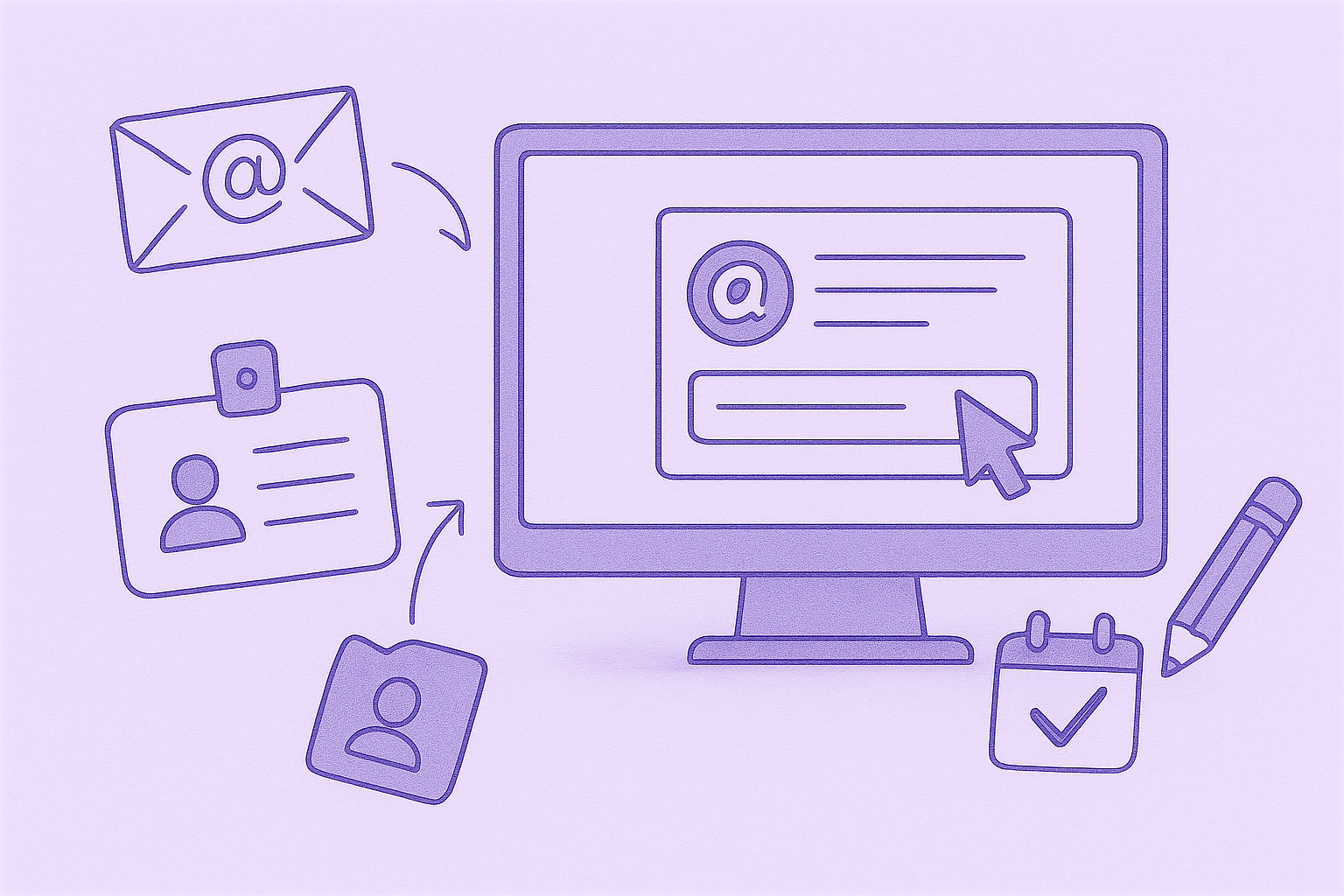



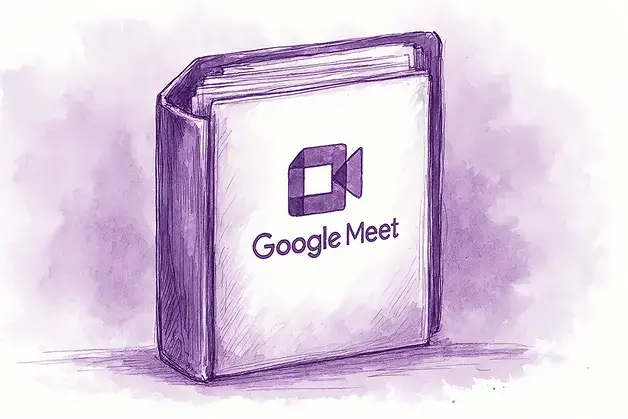


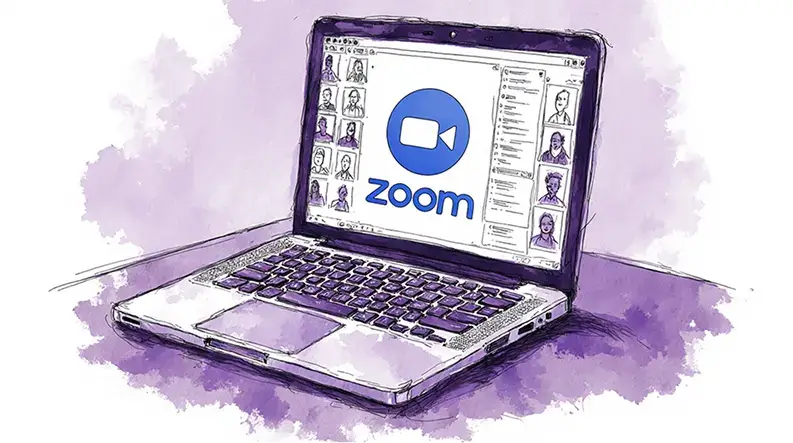






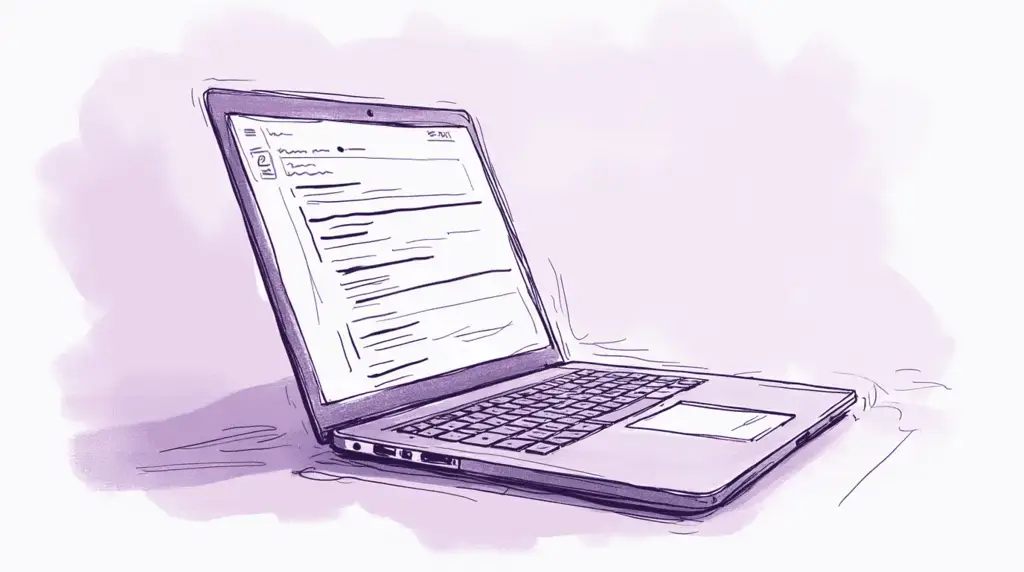




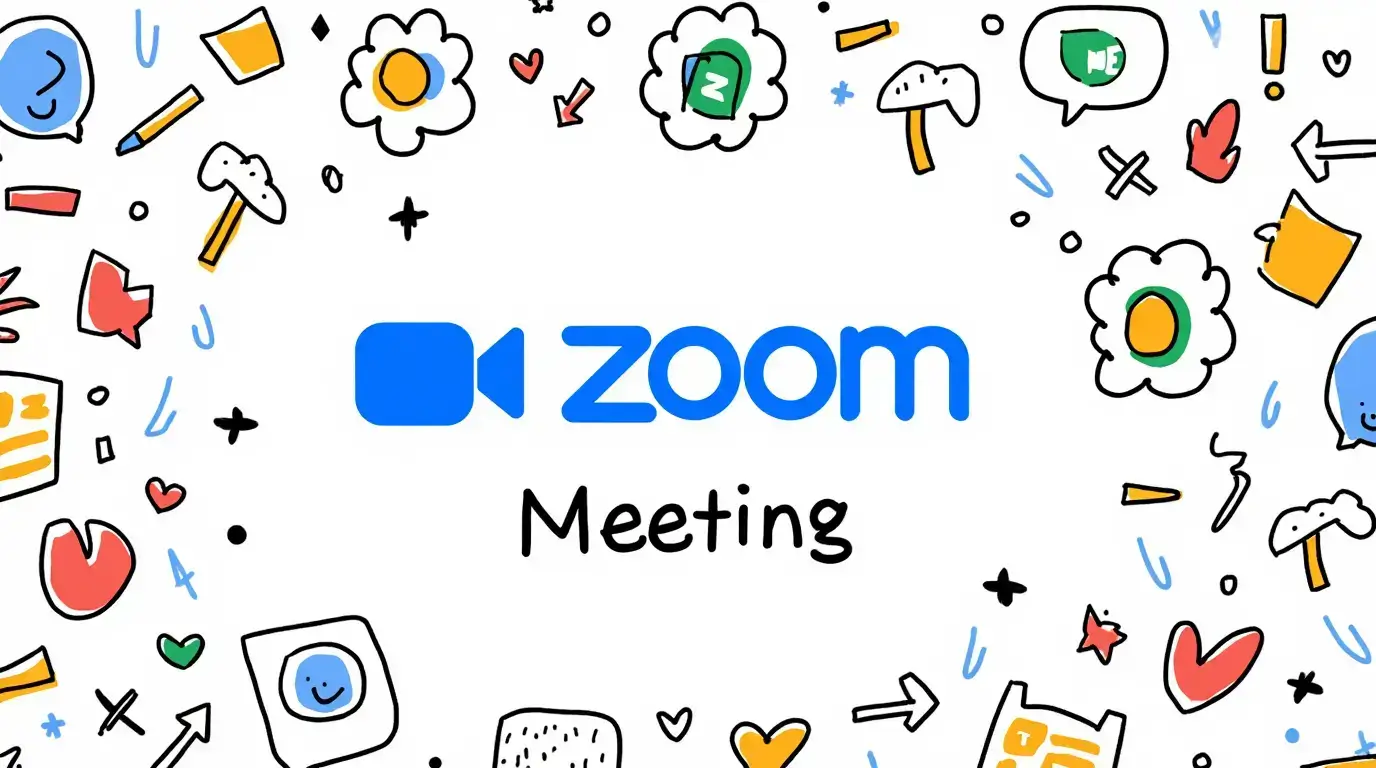



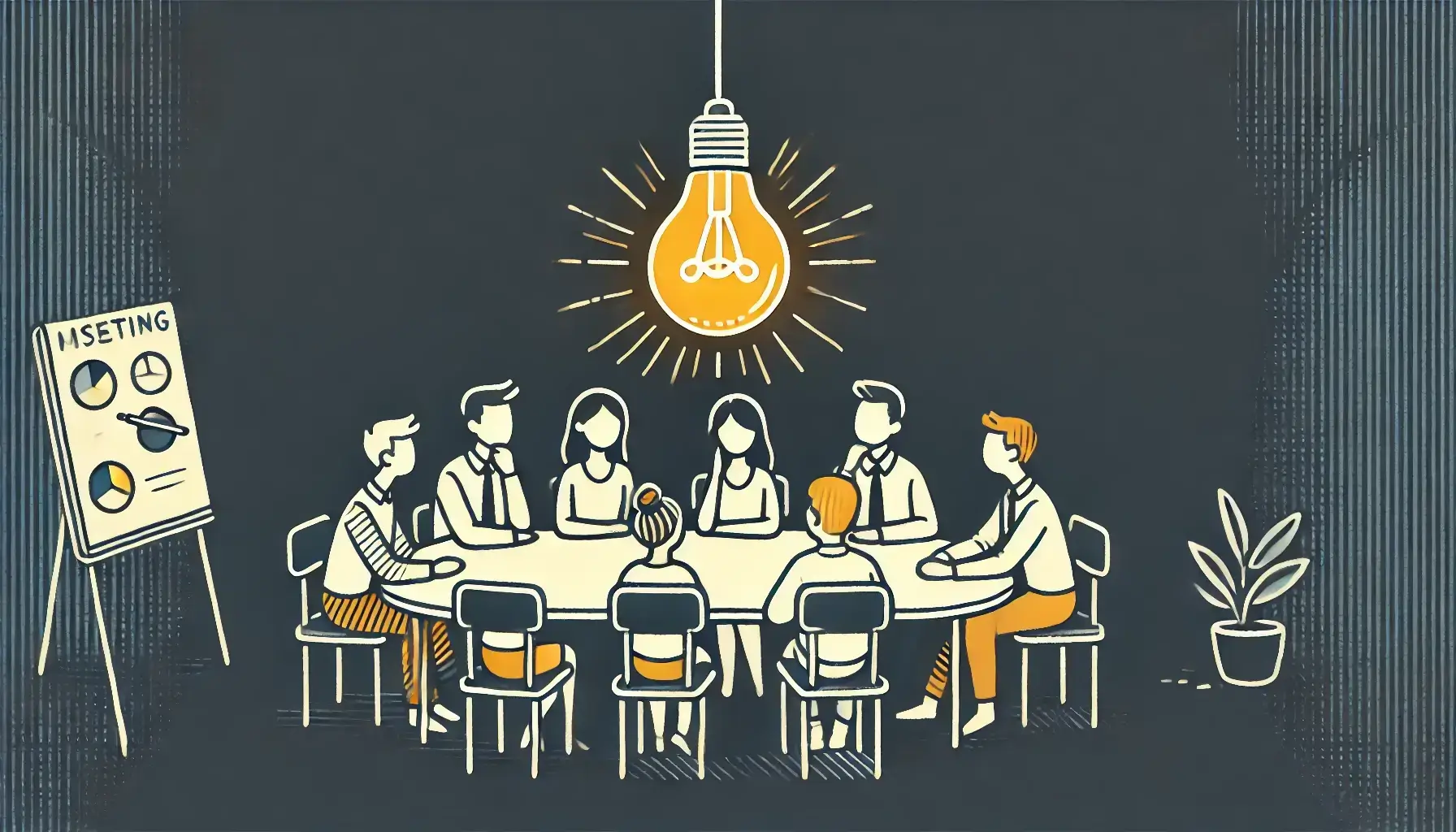
.png)









